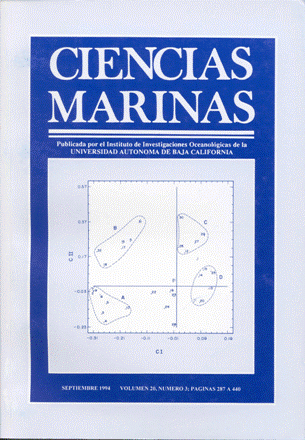Species composition and abundance of tintinnids and copepods in the Pichavaram mangroves (South India)
Main Article Content
Abstract
The annual pattern of distribution and abundance of tintinnids and copepods -taking them as the representatives of the major components of microzooplankton (20 to 200 µm) and mesozooplankton (200 µm to 2 mm), respectively-was studied at the Pichavaram mangroves (India). Monthly samplings were made from January to December 1989, covering three stations. For tintinnids, density varied from 60 to 44,990 org./m3. Agglomerated tintinnids were the dominant form. The maximum abundance (80,740 org./m3) of copepods was recorded in the freshwater and neritic water mixing zone (station 2) during summer and the lowest (80 org./m3) in the freshwater zone (station 1). The genera Acartia and Acrocalanus (belonging to the suborder Calanoida), Macrosetella and Euterpina (belonging to the Harpacticoida), and Oithona (belonginp to the Cyclopoida) were coincident with the maximum species abundance at station 2. Species like Acartia southwellii and Oithona brevicornis were observed during the lower abundance period. Calanoid and harpacticoid copepods were also dominant at station 3. A significant positive relationship between the abundance of tintinnids and copepods was observed. The seasonal distribution and abundance of tintinnids and copepods are discussed in relation to hydrographical parameters.
Downloads
Article Details
This is an open access article distributed under a Creative Commons Attribution 4.0 License, which allows you to share and adapt the work, as long as you give appropriate credit to the original author(s) and the source, provide a link to the Creative Commons license, and indicate if changes were made. Figures, tables and other elements in the article are included in the article’s CC BY 4.0 license, unless otherwise indicated. The journal title is protected by copyrights and not subject to this license. Full license deed can be viewed here.

